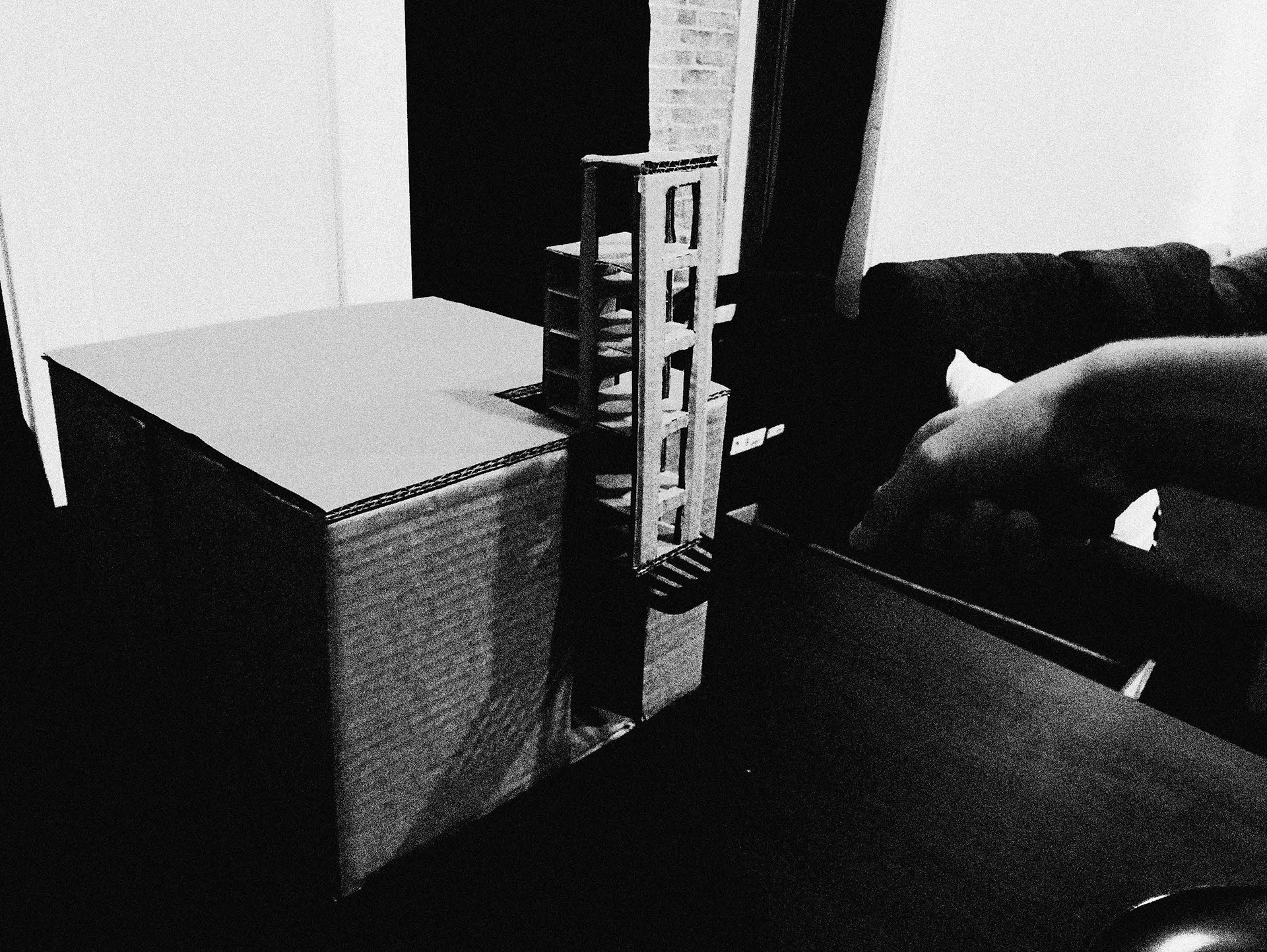Exploring the part-to-whole relationships of library typology, the Phillips Exeter Academy Library in Exeter, NH served as an excellent study model. Designed by renowned architect Louis Kahn, the Exeter Library is composed of distinctive cores that come together to form a functioning library defined by ample light and practical circulation.
In making a study model, I focused on the symmetry of the building and the exterior envelope as it relates to the adjacent reading spaces on the inside. To demonstrate these points (while at the same time using recycled materials), I formed cardboard into the shape of a box- meant to represent a cake. Cutting into a typical cake results in an identical slice every time, just as slicing into the Philips Exeter Academy Library to reveal its interior will always produce a similar cross section.
The model photos represent a step-by-step process of "baking the cake," which is meant to illustrate the symmetrical nature of the building. Cutting into the Exeter Library and taking out a slice, the tall exterior windows and their corresponding double-height reading carrel spaces are illuminated in section, and are meant to represent a similar language that exists throughout.




The circulation diagram is meant to demonstrate how one might enter and typically move through the building. Entering through the grand staircase into the lobby, one might first wander and gaze upward into the light-filled atrium. Using either of the staircase cores, the student would enter the stacks via circulation around the atrium, and then proceed to move through them to pick out a book. Book in hand, one would continue through the stacks to the double-height carrels around the building's perimeter to read in a comfortable, light-filled space.

